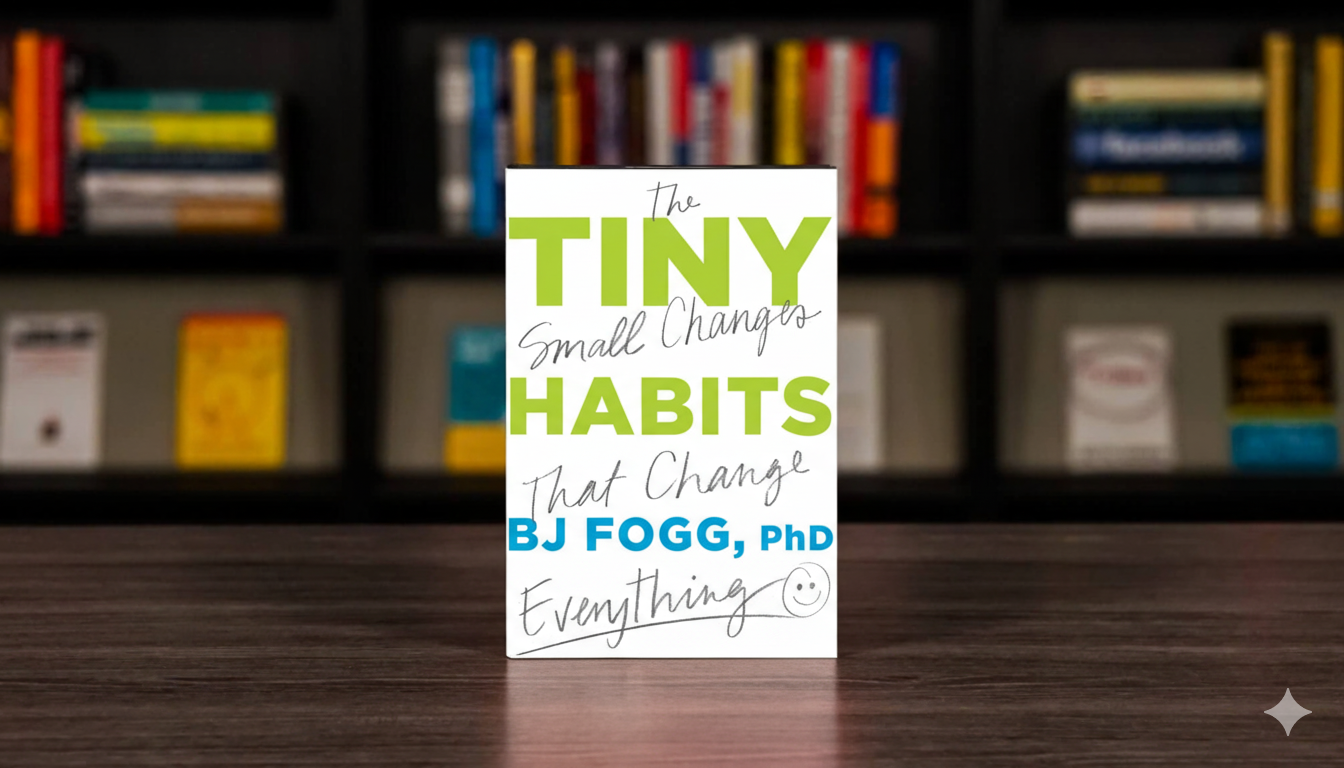We've all been there: full of enthusiasm, we set ambitious goals. "I'm going to work out an hour every day!" "I'll meditate for 30 minutes every morning!" A few days later, the motivation wanes, the goals feel overwhelming, and we're back to square one, feeling like failures.
Sound familiar? Then you need to read BJ Fogg's game-changing book, Tiny Habits: The Small Changes That Change Everything. Fogg, a Stanford behavioral scientist, has cracked the code on how habits actually form, and it's far simpler and less daunting than you think.
The Problem with Big Goals
Our biggest mistake is often aiming too big, too fast. We rely on motivation, which is notoriously fickle. Fogg's research reveals a fundamental truth: "Motivation is like a wave. It comes and goes. Ride it when it's there, but don't count on it."
Instead of chasing fleeting motivation, Fogg teaches us to leverage something much more reliable: tiny habits.
The Fogg Behavior Model
At the heart of Tiny Habits is a simple formula: B = MAP.
- Behavior happens when
- Motivation,
- Ability, and
- Prompt
- all converge at the same moment.
Crucially, if motivation is low, your ability to perform the behavior must be incredibly high (i.e., super easy). This is where "tiny" comes in.
The Power of Being Tiny
A tiny habit is a simplified version of the behavior you want to create. It's so small and easy that it feels almost ridiculous not to do it.
Instead of "workout for an hour," try:
- "After I pour my morning coffee, I will do two push-ups."
- "After I sit down at my desk, I will stretch my arms for ten seconds."
Instead of "meditate for 30 minutes," try:
- "After I brush my teeth, I will take one deep breath."
The key is to start minuscule. Make it so easy you can't say no.
The Three Steps to Tiny Habits
Fogg outlines a simple 3-step process:
- Anchor Moment: Find an existing routine or event that happens reliably (e.g., pouring coffee, brushing teeth, sitting down to eat). This is your prompt.
- New Tiny Behavior: Attach your new, tiny habit to that anchor. Make it ridiculously small.
- Instant Celebration: Immediately after performing the tiny habit, celebrate! This could be a mental "Yes!", a physical fist pump, or saying "Good job!" This positive emotion wires the new habit into your brain. As Fogg emphasizes, "Emotion creates habits."
Why This Works
- Builds Momentum: Success, no matter how small, breeds confidence and a desire to do more.
- Reduces Reliance on Motivation: Because the habit is tiny, you don't need high motivation to do it.
- Rewires Your Brain: The instant celebration releases feel-good chemicals, strengthening the neural pathway for the new behavior.
- Scalability: Once a tiny habit is wired, you can gradually increase its intensity or duration.
If you're tired of setting big goals only to fall short, Tiny Habits offers a compassionate, effective, and scientifically-backed path to lasting change. Stop trying to move mountains with sheer willpower. Start with a pebble, celebrate your progress, and watch your life transform, one tiny habit at a time.
